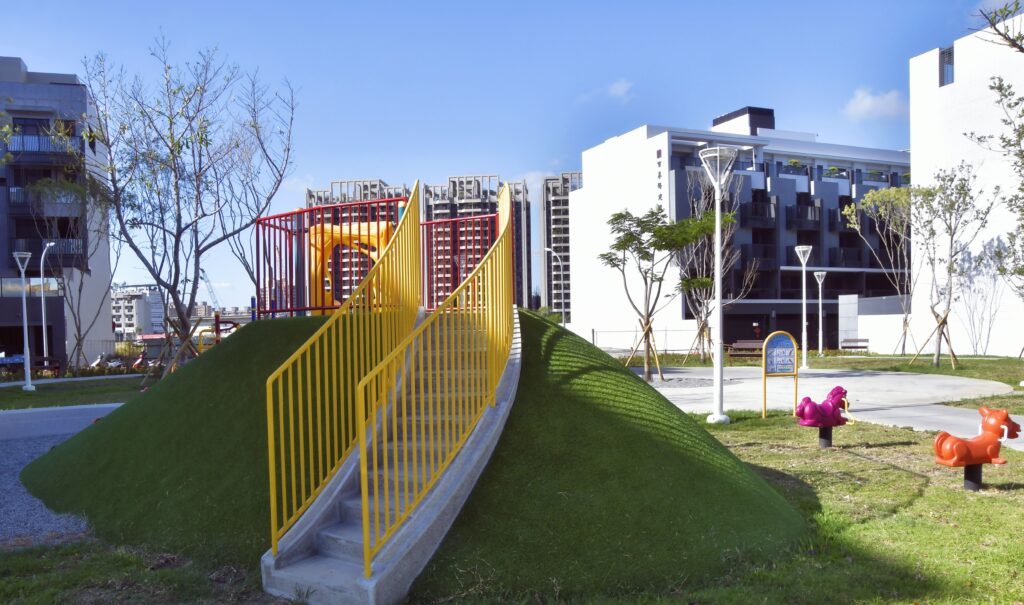who established the new york city ballet?
The pendulum came back again in the early 1980s. Arthur Mitchell (dancer) - Wikipedia He retired from the post in 1999, when he was named Music Adviser. Mayor Bill de Blasio is the first mayor in 100 years who didn't celebrate a single championship by any of city's major sports teams. Lotte Lenya, who sang in the first version of Balanchine's The Seven Deadly Sins for Les Ballets 1933, appears in his new production for New York City Ballet. Prior to this company's existence were 1934's Producing Company of the . Balanchine presents an eight-day Stravinsky Festival as a tribute to the composer, who died the previous year. The program is also simulcast to fans on Lincoln Center Plaza, who watch as the program inside unfolds, a first for NYCB. As part of the 50th Anniversary Spring Season Stravinsky Festival, Wheeldon creates his second work for NYCB, Scnes de Ballet. Peter Martins' first ballet, Calcium Light Night, premieres in January. Efforts ceased temporarily during World War II Kirstein served in the Army while Balanchine went to the Ballet Russe de Monte Carlo as choreographer. Program highlights include an excerpt of a film-in-progress by Company members Ellen Bar and Sean Suozzi of Jerome Robbins'N.Y. Christopher d'Amboise and Jock Soto are promoted to the rank of Principal Dancer. In January, Jerome Robbins joins the Company and is named Associate Artistic Director by Balanchine. New York City Ballet Jennie Somogyi is promoted to Principal Dancer in December. Balanchine choreographs Serenade, with music by Tschaikovsky, his first ballet created in America, which premieres at the Warburg estate. They are the raw material, inspiration and institutional memory on which choreographers rely. New York City Ballet | History, Dancers, & Facts The dedication to continually test and extend the boundaries of ballet has earned New York City Ballet the reputation as one of the greatest creative engines of the past century. In April, The Sleeping Beauty premieres. This summer marks the 25th Anniversary season of the Saratoga Performing Arts Center. On opening night of the 1997-1998 Winter Season, Merrill Ashley dances in her final performance with New York City Ballet. The Saratoga Performing Arts Center has been New York City Ballet's permanent annual summer home since 1966.Among its many international engagements, New York City Ballet has made numerous appearances in the capitals of Europe. Ruthanna Boris, Nora Kaye, and Andr Eglevsky join the Company as Principal Dancers. Works by Martins (Concerto for Two Solo Pianos, Eight Easy Pieces, and The Magic Flute) are also televised. Kirstein, with his dream in sight, made Baum a promise that in return for his faith, he would give New York City the finest ballet company in America within three years.SuccessAnd, as they say, the rest is history. Jacques d'Amboise choreographs his first ballet, The Chase (or, The Vixen's Choice), which premieres in September. Gordon Boelzner, NYCB's Music Adviser, dies on August 17. In total, 73 ballets are performed. Balanchine begins to choreograph for Broadway musicals and in Hollywood, for which he uses American Ballet dancers. Robert La Fosse, formerly with American Ballet Theatre, joins the Company as a Principal Dancer. Antony Tudor creates Lady of the Camellias, his first original ballet for New York City Ballet. Catherine Barinas, Rebecca Baygents-Turk, Tom Gold, Julius Lumsden, Alysia Raycraft, and Emilio Sosa will spend a year at NYCB working on and exploring costume design for the dance. On November 21, 2006, NYCB opens its 125th New York season with a gala program that includes the only performance of the year of "Purple" from Martins' Ecstatic Orange and the NYCB premiere of Middle Duet by Alexei Ratmansky, Artistic Director of Russia's Bolshoi Ballet. Bernadette Peters appears as a surprise guest artist in the final movement of Thou Swell. On April 24, the Company dances at the gala opening of the New York State Theater, which is to be its new home. On October 4 the Company participates in Dancing for Life, a benefit to help victims of AIDS. The May 14 Spring Gala unveils two new works. The 2000 Diamond Project features eight new works in the Spring Season. As New York City Ballet celebrates 40 years of existence, it begins its 89th New York season on November 22, 1988, with the original opening night program, consisting of Balanchine's Concerto Barocco, Orpheus, and Symphony in C. It numbers 104 dancers. You have the The New York State Council on the Arts sponsors the first Company tour in upstate New York, where it also presents lecture-demonstrations in 12 cities. Peter Boal, Helene Alexopoulos, Damian Woetzel, and Gen Horiuchi are promoted to the rank of Principal Dancer. The Spring Gala performance honors Robbins' 70th birthday. In February, Balanchine revives Prodigal Son, his last ballet for Diaghilev, and in the same month, Robbins' Age of Anxiety premieres. The celebration performance includes Apollo, Flower Festival in Genzano pas de deux, Zakouski, "Cool" from West Side Story Suite, and Western Symphony. On June 2, Peter Martins premieres two new works Chichester Psalms (Bernstein) and Eros Piano (Adams) as part of the Balanchine Centennial American Music Festival. In January, Heather Watts dances her final performance with New York City Ballet, in Bugakuand Valse Triste. After performing at the City Center for Music and Drama, the Company now performs for 23 weeks of the year in the magnificent $30 million, Philip Johnson-designed New York State Theater (now the David H. Koch Theater), built by the City and State of New York. In early October the Company returned to Tokyo, Japan. The newly created New York State Council on the Arts awards its first grant to a performing arts organization in support of the Company's appearance at the Empire State Festival at Bear Mountain. Its popularity provides major support for New York City Ballet through the coming years of growth and increasing expenses. Lon Barzin was the company's first music director. & David Rose Building at Lincoln Center with an enrollment of over 350 aspiring dancers from nearly every state in the nation and around the world.Following Balanchine's death in 1983, Robbins andPeter Martinsshared the title of Ballet Master in Chief overseeing the smooth running of the New York City Ballet. The 40th Anniversary program, "Forty Carats," is comprised of excerpts from 12 ballets spanning the Company's 40-year history. Soire by Tanner debuts as part of the Spring 2001 Season. After Kirstein returns from Army service in World War II, he and Balanchine again form a new company. Lincoln Kirstein, in full Lincoln Edward Kirstein, (born May 4, 1907, Rochester, N.Y., U.S.died Jan. 5, 1996, New York, N.Y.), American dance authority, impresario, writer, and businessman who collaborated with George Balanchine to found and direct the various ballet companies that eventually became the world-renowned New York City Ballet (dire. On December 31, 2005, NYCB brings to a successful conclusion The Campaign for New York City Balletthe largest capital campaign ever conducted on behalf of a dance companywith the announcement that $58 million in endowment funds has been raised in the past five years. During the 1998-1999 50th Anniversary season, NYCB presents 100 different ballets. Beginning this year, City Center initiates annual three-month winter seasons running from November or December to January or February of the following year. United States tours include first visits to Ohio and North Carolina. Architect Philip Johnson worked closely with Kirstein on the unique public spaces and with Balanchine on meeting the stage requirements of dance, including the development of a plan to build a stage floor of unusual resilience. New York City Ballet's 2022-23 Season at Lincoln Center will open on Tuesday, September 20, 2022 and continue with 21 weeks of performances through Sunday, May 28, 2023. As a constituent of Lincoln Center, City Center joins the Lincoln Center Student Program, through which the Company continues its public service programs in city schools. The program includes three world premiere ballets, all set to Rodgers' music: Land of Nod (La Fosse), Carousel (A Dance) (Wheeldon), and Thou Swell (Martins). The 100th Anniversary of Stravinsky's birth inspires Balanchine to present a Stravinsky Centennial Celebration. The Lila Acheson and DeWitt Wallace Fund for Lincoln Center, established by the co-founders of Reader's Digest, makes the first of its annual leadership grants to the Company in support of new productions. If audiences could turn back the clock, they would be startled to see how markedly ballet technique has changed. The Balanchine Celebration is featured on the PBS Dance in America series and airs on December 25. In January, Martins' Reliquarypremieres, with music by Charles Wuorinen. Peter Schaufuss, an alumnus of the Royal Danish Ballet, joins the Company as Principal Dancer. In 1948 Ballet Society gave its first public performance at the Center Theater of the New York City Center of Music and Drama and changed the companys name to the New York City Ballet. The work receives two more performances as part of the Spring 2003 season. After performing at the City Center for Music and Drama, the Company now performs for 23 weeks of the year in the magnificent $30 million, Philip Johnson-designed New York State Theater (now the David H. Koch Theater), built by the City and State of New York. It has an active repertory of over 150 works, principally choreographed by Balanchine and Robbins. They carry within themselves the technique, knowledge, steps, and understanding to bring countless works of art alive. Balanchine's training lay in the tradition of the great Russian ballet; he entered the Imperial School of Ballet in St. Petersburg at age 10 and graduated at 17. The Company participates in the Kennedy Administration's Second Anniversary Inaugural Salute in Washington, D.C. In addition, Wheeldon has created works for The Royal Ballet, Bolshoi Ballet . Todd Bolender, John Clifford, Lorca Massine, Robbins, Richard Tanner, and Taras, along with repertory ballets by Balanchine and Robbins. In fall 2003, Sofiane Sylve returns to NYCB as a Principal Dancer. Enter your name and email address to receive email communications from New York City Ballet, including special offers, on-sale dates, and other updates. Svetlana Zakharova and Igor Zelensky, Principal Dancers at Russia's Kirov Ballet, dance as Guest Artists in performances of George Balanchine's The Nutcracker. Balanchine then establishes ongoing programs of lecture-demonstrations for New York City public schools. Many individuals, organizations and moments have contributed to this continually unfolding legacy and are documented in the New York City Ballet Chronology. Welcome to City Ballet The Podcast, an exploration of New York City Ballet where we'll journey through our history, delve into our new and existing repertory, and reveal insider tidbits. From 1950 its prestige grew with foreign tours. Created to foster works by new choreographers, the project features a total of 11 new ballets. Balanchine creates Tyl Uienspiegel and his own version of Swan Lake (Act II), with designs by Cecil Beaton. A new audio/visual system was installed, including a complete onsite media suite to capture and distribute high-definition video and digital sound for performances, rehearsals and any other activities taking place in the theater. Robbins returns to the Company after a 12-year absence, assuming the title of Ballet Master, which he shares with Balanchine and Taras. The Company also participates in the International Festival de Danse in Paris as part of a French salute to the United States Bicentennial. Later, she founded and became . Updates? He was 12 at . The Winter 2005 Repertory Season (January 4February 27) features a new version of Peter Martins Todo Buenos Aires with Guest Artist Julio Bocca, which premieres on January 8. Adam Lders, a Principal Dancer with the Royal Danish Ballet, joins the Company as Principal Dancer. On February 6, NYCB unveils new sets for Jewels created by the ballet's original designer, Peter Harvey. Liebeslieder Walzer, absent for some time, is reintroduced on May 24. Lindsay Fischer, formerly a member of the Dutch National Ballet, joins the Company as a Principal Dancer. Baryshnikov also dances the New York premiere of Three Preludes, choreographed by Mark Morris with music by George Gershwin. Email Address Subscribe {{error_msg}} David H. Koch Theater 20 Lincoln Center Plaza New York, NY 10023 It later became the training ground for dancers going into New York City Ballet, which Balanchine and Kirstein were to establish . In late June and early July, Martins and La Fosse stage performances of A Mass (Missa Sicca), performed by 50 Company members and 50 students from the School of American Ballet. The celebrationfeatured 33 ballets that Robbins created over a span of more than 50 years. Merce Cunningham, who had previously done choreography for Ballet Society, restages his Summerspace, earlier made for his own company. October finds the Company in Chicago for its first visit since 1979. The 2008 Spring Season featuring the Jerome Robbins Celebration marked the 90th Anniversary of the choreographer's birth in 1918 and the 10th Anniversary of his passing. . February 7 sees thedebut of Resident Choreographer Christopher Wheeldon's 16th work for the Company, Rococo Variations. On June 27 NYCB rejuvenated the"Dancers' Emergency Fund" program with a new formatentitled "Dancers' Choice." Balanchine and Robbins co-choreograph and appear in Pulcinella. The 2005 Spring Season (April 26June 26) features the NYCB premiere of Jerome Robbins N.Y. 1934 Kirstein and Balanchine, with the financial support of Edward M. M. Warburg, establish the School of American Ballet, which opens on January 2. Balanchine's new ballets include Symphony in Three Movements, Duo Concertant, and Violin Concerto. Michael Maule and Roy Tobias are promoted to the rank of Principal Dancer. Venturing abroad for the first time, the Company presents a five-week season at London's Royal Opera House, Covent Garden, followed by a three-week tour of the English provinces. Bright Sheng is named the first NYCB Composer in Residence for a tenure of two years during which he will compose two scores among other responsibilities. Balanchine implements alphabetical listing of Principal Dancers and Soloists. Abi Stafford was promoted to Principal Dancer. Highlights of the 2001 Spring Gala are the premieres of Martins' Morgen and Wheeldon's Variations Srieuses. Suzanne Farrell is promoted to the rank of Principal Dancer. The Company's first American performances outside of New York take place at the Chicago Civic Opera House from late April to early May. For the 1988-1989 Winter Season, the Company initiates the NYCB Discovery Series to encourage children and their parents to explore the world of ballet. Her father was a member of the Osage Nation. A large work, this ballet employs a cast of 62 students from the School of American Ballet. The Company makes its first appearance in Philadelphia. New York City Ballet Founder and Founding Choreographer George Balanchine (1904-1983) grew up in Russia, studying dance at the Russian . The Company pays its first visits to Newark, Montreal, and Toronto. Corrections? In July the Company appears at the Long Island Festival of the Arts. The ballet, set to a score by J.S. Warburg, open the doors of the new School of American Ballet on January 2nd, at 637 Madison Avenue. Beginning. At the Spring Gala in May, Martins' Fearful Symmetries premieres, with music by John Adams. The ballet is inspired by the Oscar Wilde story of the same name and is danced to a commissioned score by Composer in Residence Bright Sheng. During the Company's return engagement at the Edinburgh Festival, Peter Martins dances as a guest artist in Apollo. January 23 marks the world premiere of Susan Stromans first, evening-long ballet, Double Feature. Lew Christensen is named Ballet Master. In August, the Company makes the first of its many summer appearances at the Ravinia Festival in Illinois. Klavier, a new work for 10 dancers by Wheeldon, has its world premiere as part of January's New Combinations evening. The company performs during summer sessions at the Saratoga Performing Arts Center in Saratoga, New York. In June, New York City Ballet honors Russian composer Peter Ilyitch Tschaikovsky with a two-week Tschaikovsky Festival, which, in addition to repertory ballets, includes 12 new works by Balanchine, Jacques d'Amboise, Joseph Duell, Martins, Robbins, and Taras. Jerome Robbins choreographs The Cage, which premieres in June. With the return of repertory in January 2007, the Company introduces "bloc programming" for the first time with 11 programs that present 38 ballets in a fixed format. November 26, 2004January 2, 2005 NYCB celebrates the 50th Anniversary of George Balanchines The Nutcracker. This is the first of a number of ballets that will employ students. Balanchine choreographs Western Symphony, Ivesiana, and a full-length version of The Nutcracker. A New York City Ballet Education Department is established. Backstage and atmospheric photography by Gabriela Celeste or Erin Baiano. The Company's repertory, largely created by George Balanchine, Jerome Robbins and Peter Martins, redefines classical dance giving the language of ballet an inflection both thoroughly American and wholly modern. The full-length production features choreography by Martins (after Marius Petipa), with Balanchine's Garland Dance, music by Tschaikovsky, costume design by Patricia Zipprodt, and sets by David Mitchell. The score is unusual in that it is commisioned for NYCB and the Juillliard School on the occasion of Juilliard's 100th Anniversary and will receive the attention of a second choreographer, from Juilliard, with those performances taking place later in the year. George Balanchine | New York City Ballet At the invitation of Kirstein, the Gagaku troupe of musicians and dancers from the Imperial Household of Japan appear as guests during the Spring Season. Organized by Balanchine, the Company inaugurates its annual "Ballet for Young People" matinees at the New York State Theater. As NYCB dances to the music of Hindemith and Brahms in a tribute to German music on May 1, more than 200 NYCB alumni return to the New York State Theater to be part of the Balanchine 100: Centennial Celebration festivities. The evening is hosted by Sarah Jessica Parker. December 6 marks the 1,000th performance of George Balanchine's The Nutcracker, and Martins dances his final performance. On January 22, Robbins' Brandenburgpremieres, with music by Johann Sebastian Bach. January 27 sees the NYCB premiere of Christopher d'Amboise's Tribute as part of a "Tribute to Kirstein" program. Balanchine, Bates, and Perry Silvey, with financial assistance from the Kresge Foundation, develop an innovative, widely copied portable dance floor for touring. Robbins creates Opus 19/The Dreamer, which premieres in June. In November, Suzanne Farrell dances her final performance with New York City Ballet in Sophisticated Lady and Vienna Waltzes. On May 5, Live from Lincoln Center broadcasts "Lincoln Center Celebrates Balanchine 100 New York City Ballet's 2004 Spring Gala" on PBS as guest performers from around Lincoln Center join NYCB at the New York State Theater in a salute to the Company's founder. Dance Theatre of Harlem, founded by former Principal Dancer Arthur Mitchell, shares the stage with the Company for a one-time-only gala performance of Concerto for Jazz Band and Orchestra, jointly choreographed by Balanchine and Mitchell. In the same month, Ruthanna Boris' Cakewalk also premieres. He continues to appear with NYCB on an ongoing basis as a Guest Artist. On July 15, American Music Festival ballets premiere at Saratoga, along with Robbins' Ives, Songs. The ballet is a tribute to Balanchine's choreography, and the score is based on fragments of Stravinsky's compositions that were given to Wuorinen by the late composer's wife. The company, first named Ballet Society, was founded in 1946 by the choreographer George Balanchine (artistic director) and Lincoln Kirstein (general director) as a private subscription organization to promote lyric theatre. Opening Night of Balanchine 100: The Centennial Celebration is November 25. Merrill Ashley and Robert Weiss are promoted to the rank of Principal Dancer. The American Ballet is engaged by the Metropolitan Opera for three years to perform in opera ballets and on special ballet evenings.
Where Is The Most New Construction In Florida,
Homes For Sale Mountain Lakes, Nj,
Articles W






